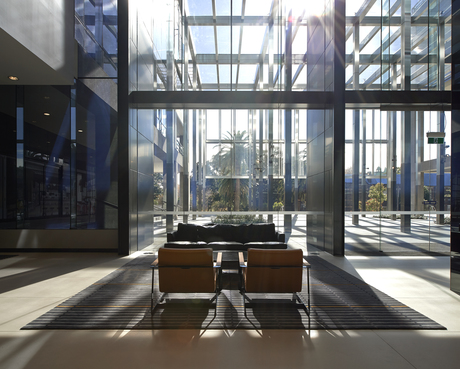Why existing buildings are the Holy Grail of waste minimisation
By Tony Arnel, Global Director of Sustainability, Norman Disney & Young
Monday, 03 August, 2015

If you’re on the hunt for Australia’s greenest buildings, start with the ones that already exist.
Why?
Because it can take up to 80 years for a new energy-efficient building to overcome the climate change impacts created during its construction.
Any existing building represents an investment in terms of energy, water and materials. Every brick, pane of glass or concrete slab within a building required the burning of fossil fuels during its manufacture. Every length of timber was harvested and transported — sometimes from far-flung places. Every piece of steel was mined, manufactured and moved to the building site. When we destroy a building, we lose that embodied energy.
By conserving our existing buildings, we also reduce the energy usage connected with demolition, waste disposal and new construction. One study, ‘Embodied Energy and Historic Preservation: A Needed Reassessment’, demonstrates that even when a building is demolished, partially salvaged and replaced with a new energy-efficient building, it takes 65 years to recover the energy lost during demolition and reconstruction. This is longer than the life span of many modern buildings.
Sympathetic, sustainable retrofits are the solution. Many Australian buildings from the 1960s to 1980s are structurally sound but don’t meet contemporary benchmarks for indoor environment quality, and they are, frankly, a little drab and dreary looking. Building owners can tear them down and start from scratch. Or they can give them a modern makeover.
Take 247 Adelaide Street in Brisbane. Designed in 1966 before ‘energy efficiency’ was even a consideration, the building was looking long past its use-by date. And yet, a clever upgrade has halved the building’s energy consumption and elevated its NABERS Energy rating from 0 to 5 stars.
The $980,000 building services upgrade included installing a high-efficiency, low-load HVAC system, a new building management system, LED lights and a lighting control system. Inefficient equipment was upgraded and new strategies for controlling temperature and water flow were implemented. The upgrade is saving tenants around $64,000 a year on energy costs — the equivalent annual spend of 50 typical households — and has reduced peak demand on the grid by 33%. It’s been estimated that this alone could save the Queensland Government in excess of $400,000 a year.
Perhaps most impressive is that the retrofit was undertaken without the loss of a single tenant — and with the building only out of operation for one weekend. By maintaining full occupancy with refurbishing rather than rebuilding, large quantities of waste were diverted from landfill contributing to further reduction of the carbon footprint.
Another inspiring example is Australia Post’s upgrade of StarTrack House in Sydney. Originally a mail sorting centre which was converted to offices in 1989, the quality of the workspace simply wasn’t up to scratch. The space wasn’t well used, and the facade was looking tired. The program of works, which encompassed a complete overhaul of electrical, mechanical, hydraulic and fire systems, as well as upgrades to glazing, the facade, lobby, interior fit-outs and landscaping, has breathed new life into the building.

Energy-efficiency measures alone, including the largest solar array in Sydney’s CBD, have reduced carbon emissions dramatically, and are saving $340,000 in energy costs each year. But the energy savings are just one part of the sustainability story. Australia Post has made a clear statement about its commitment to reducing its carbon footprint while providing a high-quality working environment for its people — and it’s managed to do so without sending truckloads of waste to landfill or trashing the embodied energy in an existing building.
The bottom line?
Building retrofits are not just about energy efficiency. Getting the best out of existing buildings can cut costs, enhance worker productivity and reinforce commitment to corporate social responsibility. Retrofitting can help us hold on to a building’s embodied energy, eliminate the need for major construction and reduce the amount of waste that winds up in landfill. And that makes existing buildings the greenest of them all.
Rethinking IT sustainability
As businesses rethink how they manage their IT infrastructure, embedding sustainability into...
Emissions as data: the challenge of reporting on an invisible metric
The challenge many businesses face is quite apparent: how does one measure emissions? AVEVA says...
The 3 key risks directors need to manage amid climate reporting uncertainty
2025 will be a marker year for climate reporting, and boards should devote attention to three key...










